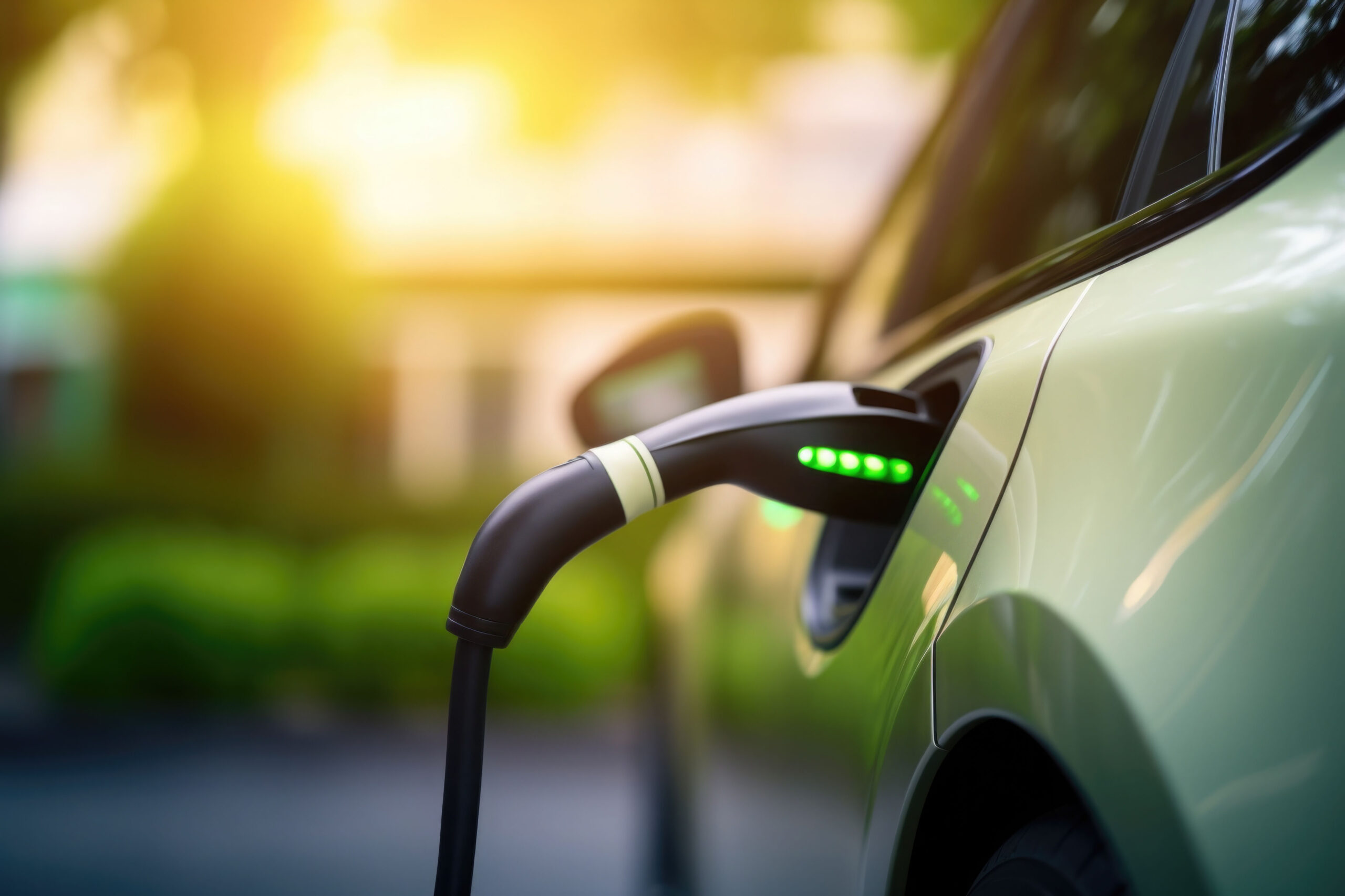
Connected mobility, an ally for sustainable mobility in rural areas
In 2022, transport was the sector with the highest CO2 emissions in France, and the second highest in the world. The development of more sustainable mobility solutions in rural, semi-urban, and remote areas is a real challenge. In France, these areas account for 33% of the total French population, 88% of municipalities, and 70% of available land. The changing structure of mobility in rural settings will need to respond to the challenges posed by the dominance of individual car use in sparsely-populated areas, often essential for any journey, on the one hand, and their widely varying requirements, on the other. So how can the transport sector address the challenges of decarbonizing mobility solutions while taking into account the specific issues relevant to rural areas?
Electric vehicles in rural areas
Rural areas are marked by the prevalent use of individual cars for everyday journeys. In 2016, nearly three-quarters of journeys made by French people living in “areas with a low population density” (smaller towns with fewer than 10,000 inhabitants) were made by car. A lack of regular public transport services fuels this dependence, meaning that there is no easy substitute for individual car use as a means of transport.
Electric vehicles (EV) present a viable alternative when it comes to reducing transport-related carbon emissions. The low cost of electricity makes for guaranteed cost savings, with a 60-mile journey costing between 2.50 and 5 euros. The European Union has already committed to switching to electric vehicles, banning the sale of new petrol or diesel vehicles as of 2035. In 2021, some 162,000 new EVs (including plug-in hybrids) were registered in France, up 46% from the previous year. Growth in global sales is even higher, with 6.6 million new vehicles sold, increasing by 108% compared to the previous year. Sales are expected to reach 20.6 million units in 2025, representing around 23% of sales, compared to 10% currently.
The success of this switch to EV will depend, in part, on an adequate supply of charging stations. On a global scale, solutions are being developed for autonomous charging stations in rural and remote areas. In North America, Electrify America provides charging stations equipped with solar panels that are battery-operated and therefore can operate without being connected to a power grid. In France, local authorities are also joining forces to strengthen the network of available charging points. As one example, the “Grand Est” region has chosen to work with Freshmile to develop a network of EV charging stations. Through this initiative, the city of Strasbourg will be equipped with almost 1,000 charging points by 2025.
Autonomous transport on roads
The development of autonomous EVs – whether individual or collective, private or shared – marks a new era in low-carbon, flexible mobility solutions. In rural areas, public transport accounts for only 5% of journeys, compared to 12% in urban areas. The development of electric-powered autonomous transport will fulfill a need for flexibility while building on existing urban plans and infrastructures.
Remote rural areas: facilitating access to essential services
The implementation of autonomous transport solutions could also provide opportunities for the elderly population, disproportionately high in these areas, and more generally for people with reduced mobility, by enabling access to transport services that are more suitable and potentially more affordable. This would also allow local authorities to better connect their citizens to public services, with flexible solutions that are better suited to their needs, also creating less financial strain for the transport services provided. The end cost of using connected vehicles could potentially be reduced as the numbers of drivers decreases. At the same time, these solutions could fulfill other needs of the population such as on-demand journeys, extended operating hours, and improved passenger safety.
Semi-urban rural areas: experimenting autonomous public transport
Nonetheless, solutions for large-scale deployment are not ready to progress beyond the test phase just yet. In 2019, the French government granted authorization for sixteen trials, including some in rural or sparsely-populated areas. The regions supporting these pilot projects are also committed to this goal, such as Rambouillet Territoires which, in September 2017, launched its “Tornado” project in partnership with Renault and twelve other partners. The aim of the 36-month test phase was to study how a shared vehicle can be used to strengthen multimodal transit services in sparsely-populated areas. A shared vehicle was provided between a train station and a business park, as well as a shared shuttle service on a fixed route around the business park.
In the French department of the Drôme, the transport provider Bertolami was supported by the Lyon-based startup Navya to launch a daily commute pilot using a ten-passenger shuttle between the SNCF train station in Crest and the Val de Drôme eco-site nearly three miles away. Between September 2020 and June 2021, nearly 700 passengers were transported with almost 2,000 miles covered. The municipal authority chose to continue with the project following the success of the initial test phase.
Outlook on autonomous vehicles
Increasing numbers of autonomous vehicles on rural roads is not yet a reality. Rural areas are complex for vehicles to navigate as they have fewer fixed reference points and landmarks, such as vegetation or crops, are constantly changing. Researchers will need to find more innovative solutions before autonomous public shuttles can be fully operational.
The success of these new mobility solutions will also depend on user acceptability. However, the outlook on this front seems positive: a 2016 study conducted by Observatoire Cetelem indicated that 81% of car drivers surveyed in 15 different countries believe that self-driving cars are a means of saving time. The implementation of effective solutions to ensure the cleanliness of a shared fleet of individual vehicles will be a factor in their acceptability by the user population. Profitability for operating structures will also be key in determining the deployment of these new vehicles.
Autonomous transport on railways
The introduction of autonomous vehicles in rural settings is not limited to roads alone. Adopting unused railway lines could link regions together to create a stronger network. As part of an integrated multimodal transport package, these services could provide a relevant and efficient alternative to individual car use.
The configuration and needs of areas with lower population density can vary widely. Manufacturers are therefore turning their focus to smaller, lightweight, autonomous trains. With this in mind, the French rail operator SNCF has begun work on two light-rail transit systems. The first of these concepts, known as Draisy, is a small, ultra-light, modular train powered by battery, with a 90-mile range allowing it to run on a non-electrified track. Intended for smaller local lines, Draisy could carry up to 30 seated passengers with standing room for 50 more. In a similar format, the Taxitrail project is a flexible, scalable train that can operate autonomously for over 350 miles thanks to its hybrid electric/hydrogen traction system. Its cost would be financially viable for lines shorter than 50 miles.
For greater user appeal, the introduction of driverless shuttle services on railways would also need to include the development of shuttles or individual cars to provide connections between different networks and modes of transports. The Flexy project, launched in partnership with a business consortium, takes this requirement fully into account. Midway between train and bus, the Flexy shuttle would be able to travel on both roads and rails. The initial test phases are set to start in 2025.
The increase in the number of electric-powered vehicles alongside the development of a fleet of individual or shared autonomous vehicles will contribute to the reduction of emissions linked to travel, particularly in areas where mobility depends heavily on cars, such as rural areas. Autonomous solutions will also help to strengthen connections between regions as well as better meet the needs of individuals. The next phases of testing, such as that of Bertolami and Navya, or the launch of the SNCF’s Flexy service in 2025, will put these new solutions to the test and allow us to see what impact they will have on rural communities.

